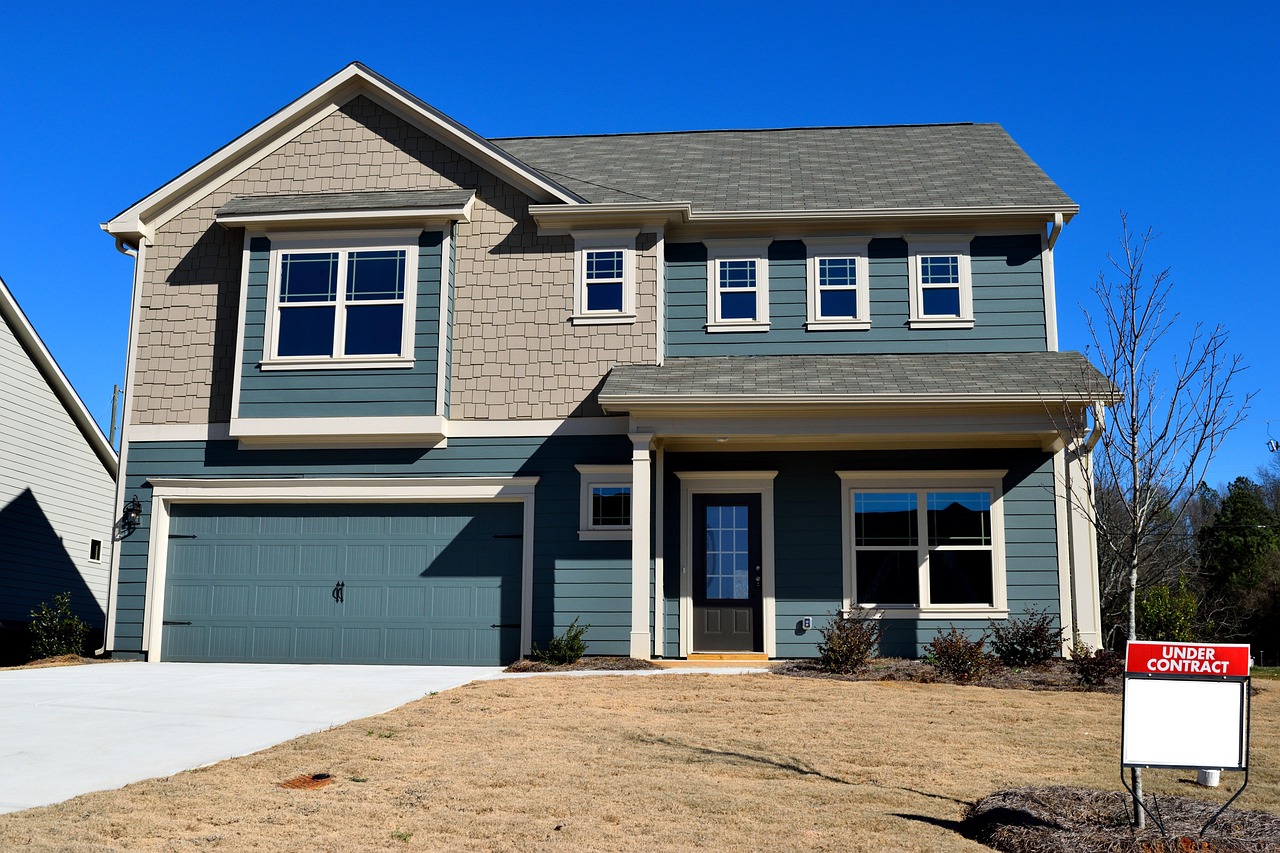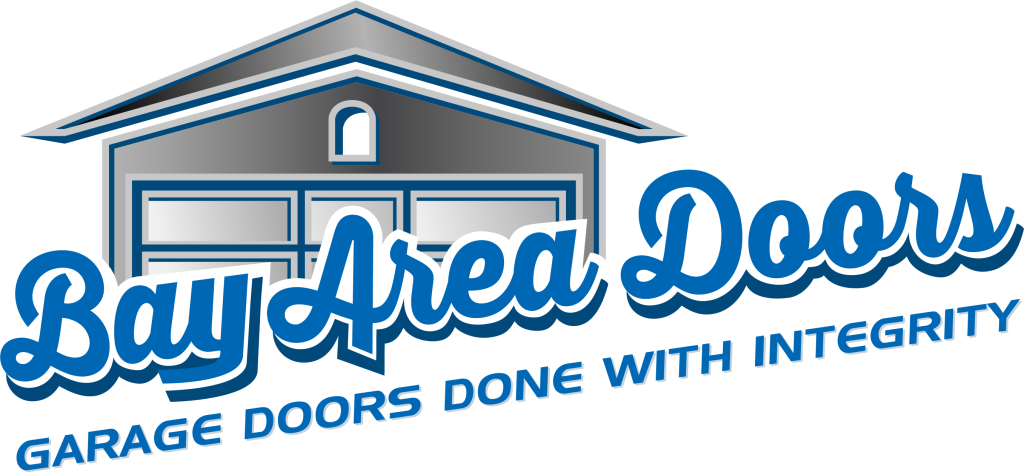You’ll know you have a broken garage door spring when there’s a visible gap in the spring, you hear a loud snap, or your door is difficult to lift manually. Most garage doors rely on torsion or extension springs, and either can exhibit wear before failure. Springs could appear extended or slack, and the door could appear warped or tilted. At other times, the opener struggles or grinds. Springs break from daily use, weather, or rust. If your door is heavy or won’t open, the spring is probably the culprit. In the following sections, you’ll discover additional symptoms to look out for, safety tips, and recommendations on what to do if your spring is broken.
Key Takeaways
- You can find that your garage door spring is broken by listening for a loud bang, inspecting for gaps in the spring, and observing if the door hangs crookedly or feels heavy.
- Your first steps are to cease use of the door, isolate the area, and disconnect the opener — actions that protect you and others from injury.
- Both torsion and extension springs have distinct symptoms of breaking. Figuring out what kind you’ve got helps you diagnose problems.
- Routine care, including lubricating your springs and regular professional tune-ups, can help prevent future breaks and extend the lifespan of your garage door system.
- Don’t try a DIY garage door spring repair — it’s too risky. It’s safer to call a pro.
- By being aware of telltale signs like strange noises, jerky or slow operation, address and tackle issues before a catastrophic failure occurs.

What Are The Signs Of A Broken Garage Door Spring?
Identifying a broken garage door spring early can save you from more expensive garage door spring repairs or unsafe conditions. Here are the main signs to look for.
- A loud bang from the garage, usually when the spring breaks
- Gap in the spring or between the door and the frame
- Garage door hangs crooked or looks lopsided
- The door feels much heavier than normal when lifting
- The door only opens a few centimeters or moves unevenly
- Jerky or unsteady movement, especially for two-spring systems
- The top section of the door bends as the opener attempts to lift it
- The door falls shut or sags a lot
- Spring shows signs of age, usually after 7–12 years
1. A Loud Bang
That loud bang from your garage often signals a broken garage door spring, typically a torsion spring, under tension. This sound is usually crisp and unexpected, catching you off guard if you’re nearby. When a spring breaks, it releases accumulated tension all at once, creating that loud noise. If you hear this, it’s crucial to inspect the door before further use. Neglecting this can lead to more extensive garage door spring repairs, making the fix more costly.
2. A Visible Gap
Check out that spring over your garage door. A break will appear as a distinct gap in the spring coil, or you’ll notice a gap between the spring and the door frame. A gap signifies that the spring has lost tension and cannot perform its duty. If the gap’s larger than normal, or you notice a complete break, snap a picture for your repair guy. It makes it easier to explain the issue and can accelerate repair.
3. A Crooked Door
If your garage door sits crooked or tilts when opening or closing, this could suggest that one spring is broken and the other is still functioning. Misalignment occurs since the door is no longer balanced. You’ll frequently notice the door protruding more to one side. This can, over time, stress the tracks and opener, and it can cause the door to stop moving smoothly.
Jerking or wobbling as it moves is another sign. With a two-spring setup, if one breaks, then the motion becomes unbalanced immediately.
4. A Heavy Door
If the door seems unusually heavy or requires a lot of exertion to lift, the spring could be broken. Springs assist in counterbalancing the door’s weight, so when a spring breaks, you’re hoisting the entire burden. This can overwork the opener and your back, and lifting the door can be hazardous.
Not only that, a heavy door can stall the opener or cause the top door panel to bend — particularly if it attempts to open against a broken spring.
5. A Fallen Door
A door that slams shut or sags significantly is an obvious sign of potential issues, possibly related to faulty springs. Lifting or moving a fallen door can be hazardous, so don’t attempt a garage door spring repair yourself. Instead, observe what occurred and provide information to your reputable garage door repair company or insurance.
Why Garage Door Springs Break
Garage door springs, particularly the torsion springs, work hard every day to assist in lifting and lowering your door smoothly. These metal coils endure stress and wear, which can lead to garage door spring repair needs when they snap. By understanding why springs break, you can identify problems earlier and schedule a professional garage door inspection to prevent escalation.
Common Reason | Description |
Wear and Tear | Daily use leads to metal fatigue and eventual breakage |
Environmental Factors | Temperature shifts, humidity, and rust speed up spring failure |
Improper Installation | Incorrect fitting shortens the lifespan and brings early breakage |
Lack of Maintenance | Skipping checks and oiling means more rust and faster wear |
Torsion VS. Extension
Spring Type | Features | Failure Mode |
Torsion | Sits above the door, winds up to lift | Snaps in one spot, forms a gap |
Extension | Runs alongside stretches to open the door | Stretches out, may hang or split |
They each have weak points. Garage door torsion springs tend to break in the middle, where the tension is greatest. Extension springs can break at the hook or begin to unwind. To see which you have, look above your garage door for a tube (torsion) or along the tracks for long, skinny springs (extension). If your springs are new but still break, poor fitting or missed steps during garage door spring repair might be to blame.
Wear And Tear
Springs weaken as they age. They usually only survive about seven to 12 years, or less if your door gets rough daily treatment. If your garage door jerks, opens unevenly, or feels heavier than normal, your springs are likely near the end of their life.
Watch for rust or a noticeable gap in the coil. These are telltale indications of a spring primed to snap. Routine service catches these issues in the early stages. By having a pro inspect or oil the springs once a year, you can stretch out their working life and avoid surprise breakage.
Environmental Factors
Hot and cold weather cause springs to expand and contract. This deteriorates the metal. If you reside in a climate where it can get cold or scorching hot, your springs might have to be replaced sooner than their typical life span.
Humidity and rain usher in rust, which devours the metal. Seasonal shifts, such as wet winters or arid summers, add additional stress. Your local environment can accelerate the rate at which your springs deteriorate.
Garage doors located in regions with salty air, such as near the ocean, could have spring life that is shorter still.
What To Do Immediately
When you suspect a broken garage door spring, it’s crucial to act quickly to reduce danger and protect your family. A faulty garage door torsion spring can drop or jam, putting you, your family, and your entire property at risk. Here’s a straightforward checklist to contain harm, secure entry, and gear up for garage door spring repairs.
Stop Operation
If you hear something unusual from your garage door, such as a loud bang or difficulty opening, avoid using it. For instance, a broken torsion spring can lead to significant issues, so don’t force the door open or closed, as this could worsen the problem or cause additional damage. Make sure to inform every household member that the garage door is off-limits until a professional garage door inspection is completed. Document any signs of damage, like a faulty spring, which will help when discussing repairs with a reputable garage door repair company.
Secure The Area
To ensure safety during a garage door spring repair, block entry to the garage so no one wanders in accidentally. Use cones, signs, or barriers to alert others to the issue. Keep kids and pets out of the garage until it’s safe once more. If you notice any loose cables or a skewed door, stay away and contact a reputable garage door repair company immediately for a professional inspection. Don’t attempt to repair or even touch the broken garage door springs yourself.
Disconnect The Opener
Locate the emergency release cord—typically a red handle—on your garage door opener. Pull to disconnect the opener from the door to prevent any accidental opening. This ensures that the door remains secure and does not slide or fall. For detailed instructions on the mechanism, refer to your opener’s manual or search online, especially if you’re considering garage door spring repair services for future maintenance.
Beyond The Break: Subtle Clues
Knowing these garage door spring warning signs, such as a broken torsion spring or faulty springs, can keep your door safe and save you from expensive garage door spring repair services. Observe and listen for these subtle shifts.
Unusual Noises
A garage door spring in distress is typically noisy. If the door grinds, squeaks, or pops when it moves, those are signs of worn or damaged springs. As with anything mechanical, a loud bang—nearly like a gunshot—means you’ve broken a torsion spring, but less dramatic sounds are there first.
Remember these sounds. If you hear an intermittent squeak or a new popping noise, mark when it occurs. It gives a repair technician clues to identify the cause more quickly. Addressing these noises early can arrest the problem from escalating and protect you from more costly repairs down the line.
Jerky Movements
If your door begins to jerk or stutter open or closed, that’s a warning sign. Springs assist in counterbalancing the door. Once it begins to give or break, the door will shift and swing unevenly. It can pop up a bit, and then pause, or chug along in bursts. Other times, the door leans because just one spring is broken.
It’s smart to shut the door when you witness jerky motion. When you resort to a door with a lopsided or broken spring, it can exacerbate the situation and increase the danger of an accident. Observe the frequency of those jerky moves. A door that slams shut or seems heavy is another indication that the spring can’t support the burden.
Slower Operation
A slow garage door isn’t just an inconvenience. Springs losing tension will cause the door to move sluggishly. If it has a hard time opening or feels stuck halfway open, the spring isn’t functioning. At times, the door will mere centimetre and then stop.
Pay attention to how quickly your door swings. If the door appears to drag or support the door assist, forward this information to your technician. Speed adjustments can indicate a spring issue early.

Can I Repair This Myself?
Many homeowners consider attempting garage door spring repair on their own to save money. With numerous online tutorials and videos available, it may seem easy enough. However, the reality is that nearly all garage door springs, particularly the garage door torsion spring, are highly tensioned—often weighing hundreds of kilograms. This makes them challenging to repair and potentially unsafe for anyone without the proper knowledge or equipment.
Before you decide to tackle this task, consider the potential injuries that could occur. Attempting to fix a broken garage door spring can lead to broken fingers, cuts, or even more severe injuries if something goes wrong. Unlike most home repairs, garage door springs are designed to hold significant tension to assist in lifting the weight of the door. If the spring breaks or isn’t adjusted properly, the door can slam down, causing harm to you, your vehicle, or your floor. Even spotting a rusted coil or a gap in the spring should prompt you to seek professional garage door inspection.
- Springs under tension can lead to the spring snapping or parts flying off.
- You may not have the necessary tools, such as winding bars or clamps.
- A lot of online guides skip important steps or safety advice.
- If you don’t understand how your door system functions, you might overlook warning signs.
- Even one mistake can ruin your door, opener or injure someone.
- Most warranties insist on work by a pro, or they won’t cover damage.
Look for obvious signs like coil gaps or a door that won’t stay open. If you notice any damage, it’s wise to err on the side of caution and halt your DIY efforts. Repair or garage door spring replacement requires specialized knowledge. Without proper training, you risk damaging the system further or breaking the automatic opener.
A reputable garage door repair company has the necessary tools and expertise to safely handle spring repairs or replacements. They can identify additional issues and ensure your door operates smoothly. By hiring a professional, you minimize danger and reduce stress associated with the repair process.
In conclusion, while DIY might seem appealing, the risks involved with garage door spring repairs underscore the importance of consulting with skilled technicians. Investing in professional garage door spring repair services can save you time and prevent further complications down the line.
How To Prevent Future Breaks
By maintaining your garage door springs, you can prevent unexpected breakdowns, expenses, and hazards. Simple measures and periodic inspections can go a long way, regardless of your location or the age of your garage. Here’s how to reduce the risk of future spring breaks and maintain your door’s function for years to come.
- Lubricate springs every few months to reduce friction. Use a light garage door lubricant– not oil or grease– and spray it along the length of each spring. Wipe away the excess to prevent dust accumulation. This is most helpful before major weather changes, such as when the season switches, to prevent the springs from drying out or rusting.
- Have them professionally inspected at least annually. Experienced professionals can identify issues you could overlook, such as tiny cracks, rust areas, or alterations in spring tension. These inspections can discover early indications of wear before the coil breaks. For extra love, schedule a complete garage door checkup every 6 months. This might consist of inspecting the cables, rollers, and opener.
- Seek out warning signs yourself every couple of months. Inspect the springs for rust, deformation, or cracks. If you notice anything strange, such as gaps in the coils or if the door seems heavy or jerky, contact a professional immediately. If your door groans when it moves or won’t stay open, that could be indicative of balance problems or a worn spring.
- Do not open the garage door if you believe a spring is broken or damaged. This can prevent further damage and keep you and your belongings safe until a professional can examine and repair the issue.
- Change both springs if one snaps. Springs work best when they are timed together, so replacing both keeps the door balanced and decreases the chance of a second break shortly after.
These steps will help make your springs last longer. Most springs last for approximately 10,000 open-close cycles, but regular maintenance helps you maximize their lifespan.
Conclusion
Identifying a broken garage door spring protects you and saves you money. You hear a loud bang, a door that won’t open, or cables that hang loose. These hints lead directly to the spring. Springs break from age, rust, or use. You don’t have to guess or test on your own. A lot of people just call a pro for fixes, as springs contain a lot of force. A quick check and fast action saves more damage. Keep springs clean and check them once a year to avoid major headaches. Your garage performs best with a robust spring installed. For straightforward replacement or safe repair, contact a reliable tech. Your safety and peace of mind – it’s worth it every day.
Frequently Asked Questions
1. How Can I Tell If My Garage Door Spring Is Broken?
You might hear a loud snap, find the door heavy, or notice gaps in the garage door torsion spring. If the door won’t open or closes lopsided, then the spring may be faulty.
2. Is It Safe To Use My Garage Door If The Spring Is Broken?
No, don’t use the door. It can be hazardous due to potential garage door spring damage, as the door might suddenly drop or harm the automatic opener. Contact a reputable garage door repair company immediately.
3. What Causes Garage Door Springs To Break?
Springs break from wear and tear, neglect, or extreme temperature variations, making regular garage door spring repair essential for longevity.
4. Can I Repair A Broken Garage Door Spring Myself?
It’s not advisable to attempt garage door spring repairs yourself, as these highly tensed springs can cause serious injury. Always reach out to a reputable garage door repair company.
5. How Often Should I Check My Garage Door Springs?
Inspect your garage door springs at least semi-annually for gaps, rust, or wear, as routine garage door spring repairs can prevent emergency disasters.
6. What Are Some Subtle Signs That My Garage Door Spring Might Fail Soon?
Squeaking sounds or a door that opens more slowly or won’t stay open are obvious signs that the garage door spring may require professional garage door spring repair services.
7. How Can I Prevent My Garage Door Springs From Breaking?
Routine maintenance, such as greasing the garage door springs and checking for rust, is essential. A professional garage door inspection can help prevent spring damage and ensure safety.
Don’t Risk A Dangerous DIY — Call Bay Area Doors For Safe Spring Replacement
If your garage door feels unusually heavy, hangs crookedly, or refuses to open, your spring may be broken—and that’s not something to ignore. A broken garage door spring is more than an inconvenience; it’s a serious safety hazard. Attempting to fix it yourself could lead to injury or worsen the damage. At Bay Area Doors, we’re here to help you restore safety and function fast. Whether you’ve heard a loud bang from your garage, noticed a gap in the spring, or your opener is struggling to lift the door, we can provide a safe, professional spring replacement. We have the tools, experience, and know-how to repair or replace your garage door spring quickly and correctly—without putting your family or property at risk. If your door won’t open or feels heavy, don’t wait. Contact Bay Area Doors now for a reliable and secure garage door spring replacement.
Disclaimer:
The information provided in this article is for educational and informational purposes only. Garage door spring replacement involves high-tension components that can cause serious injury or property damage if handled improperly. Always use appropriate safety gear and tools, and follow the manufacturer’s instructions precisely. Bay Area Doors recommends consulting or hiring a licensed professional for any garage door spring repair or replacement. By using this information, you agree to assume all risks associated with DIY repairs and hold Bay Area Doors harmless from any liability or damages resulting from its use.


